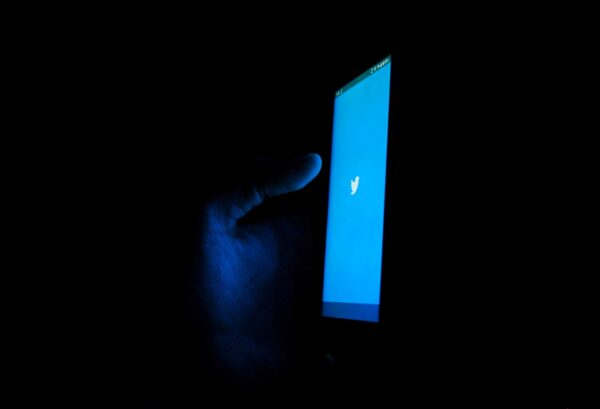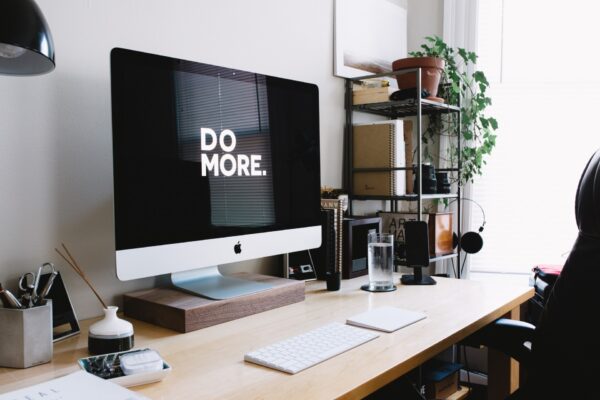
What guys need to know about the sinister side of social media
Nick Kwek is a Filmmaker and Technology journalist, seen regularly presenting Click, the BBC’s weekly Technology show. For over a decade he has been documenting global tech trends and issues, and has witnessed the rise and fall of social networks, streamers and startups. He is an Ambassador for his hometown the Kingdom of Fife.
For many young men, social media is a carefree comfort zone brimming with light-hearted LOLs, but beyond the aubergine emojis and macho memes could lie something much more sinister – a toxic breeding ground for misogynistic cyberhate, with real repercussions and criminal consequences.
As we scroll our way through endless virtual windows on a thumb-numbing mission, possibly to be seen, to be heard, to be verified, are we susceptible to subconscious influence from bad actors?
Are the views and opinions of the impressionable young man of today being swayed, coerced, poisoned even, into misogynistic beliefs?
And as Technology gets smarter, more effective and dare I say more cunning – and as we get repeatedly poked, liked, disliked, followed, unfollowed, commented on, and systematically alerted – could it be only a matter of time before we become noticeably nudged in the wrong direction?
The scale of the problem

Almost 40% of women worldwide have personally experienced abuse online, rising to almost half for younger women, according to a recent study from the Economist Intelligence Unit.
During the Covid-19 pandemic it was even worse. Nearly half of British women suffered online abuse, in a survey by Glitch UK and End Violence Against Women Coalition.
According to a YouGov poll, more than 40% of millennial women have been sent an unsolicited photo of male genitals – usually via iPhone AirDrop.
Rape threats are made every 29 minutes in popular, niche misogynistic online forums, according to the Center for Countering Digital Hate (CCDH).
With worrying regularity, the organisation found 9 in 10 posters there were supportive of sexual violence against women. It posits, “mainstream social media platforms like YouTube and Google are enabling pathways”, to misogynistic sites.
The Scottish Government has recently funded a report into misogyny, led by Baroness Helena Kennedy KC.
“We expanded it from rape to include disfigurement”, said the Baroness describing the criteria for the investigation.
“The evidence was shocking,” she told Holyrood earlier this year, “Social media has changed our environment – the ecology in which we operate now is different because of social media”.
Indeed, young people in Scotland do use TikTok, Snapchat and Facebook a lot, with the majority spending an hour per day on TikTok alone (ipsos). Collectively as a society we are spending more and more of our lives consuming social media. But at what cost?
Suggested for you

Developers for years have been perfecting the Recommendation algorithm – a powerful tool where an individual users’ feed, search or discovery areas are populated with “suggested content”.
It serves you specifically what it hopes will keep you hooked, which inevitably leads to an echo-chamber of similar stuff containing similar themes. Just look at YouTube or your Instagram Search.
This “doubling-down” on the type of content it knows you’ll engage with has been so successful that creators, brands and publishers aim to produce text, images and videos with that in mind.
The tail is wagging the dog; the mechanics of social media now determine the message being broadcast.
So, what can be done?

Back in 2019, I visited Facebook’s forensic computing lab in the States, where instances of nefarious activity online were so frequent, keeping tabs on them was a near insurmountable task.
With over half a million posts per minute, some argue the social network is impossible to fully monitor due to how it scales with time.
“If you had an infinite number of content moderators, you’d almost need one for every person who’s posting on Facebook”, Gary Warner, the lab’s Director told me.
Engineers are using artificial intelligence to help, but whilst the AI has been effective, it’s drawn serious criticism, surfaced by whistle-blower Frances Haugen, a former Product Manager at Facebook.
Haugen told the UK Parliament Joint Committee last year only “3-5%” of hate speech was actually being taken down. Haugen also claimed that, like most social networks, Facebook’s algorithms are centred around engagement, but that it knew anger was key to keeping people on it.
Facebook’s CEO Mark Zuckerberg denied Haugen’s claims, stating: “The argument that we deliberately push content that makes people angry for profit is deeply illogical. We make money from ads, and advertisers consistently tell us they don’t want their ads next to harmful or angry content.”
Lest we forget Twitter

With ultimate tech bro Elon Musk now at the helm, the Republican-supporting “free speech absolutist” plans to bring back more previously banned users, and perhaps unsurprisingly hate speech has reportedly risen during his takeover.
Twitter’s hateful conduct policy states: “[it prohibits] the dehumanization of a group of people based on their religion, caste, age, disability, serious disease, national origin, race, ethnicity, gender, gender identity, or sexual orientation”.
Twitter acknowledges, “Research has shown that some groups of people are disproportionately targeted with abuse online. This includes; women”.
It’s widely understood that people say and do things online that they would never out and about in the public arena – something known as the ‘Online Disinhibition Effect’ kicks in, which academics have been studying for years.
But as the distinction between our physical and online lives grows ever opaquer, could misogynistic cyberhate transcend its pixels and bleed out into our offline environment?
“That disinhibition that happens online has now kind of spread its wings and it now actually is in the public square.” said Baroness Kennedy.
“It lives in our playgrounds, it lives outside clubs, inside clubs, in bars and in places where people gather.”
The Baroness is recommending a new Scottish law aimed at tackling misogyny both online and off. She calls for a shift in mindset, new police training and new education within the school curriculum are needed in the long term.
But as social media use continues to explode and we venture into the ‘metaverse’ – or at least invest and interact more in increasingly sophisticated gamified and tokenised virtual worlds – misogynistic abuse is anticipated by some as not simply possible, but inevitable.
Early experiments haven’t gone well, with reports of sexual harassment and toxic misogyny already infiltrating virtual reality experiences. That said, some early major investors are proceeding with promising caution.
The tech tides are turning

Facebook, Google, Twitter and TikTok have signed up to a pledge, led by the World Wide Web Foundation, to fix persistent weaknesses in how they tackle online gender-based violence. Plans to improve reporting tools and implement better blocking controls are being rolled out.
Of course, not all men are the problem and obviously men receive sexist abuse too, but lads, if you’re reading this, it’s time to tidy up our timelines.
Whenever you come across demeaning, sexist, threatening language or harassment online, call it out. Flag it as inappropriate. Unfollow bad eggs. Use your online safety tools and help spread the word.
Set an example. If your mate posts abuse, have a word.
Refrain from posting misogynistic comments yourself and abstain from sharing them.
Don’t engage. Don’t be that guy.
SUPPORT
Police Scotland advice on staying safe on social media
Police Scotland advice on general internet safety
You can find advice and information on the Police Scotland website
Call Police Scotland on 101 or contact the Rape Crisis Scotland national helpline for free on 08088 01 03 02 (daily 5pm-12 midnight).
In an emergency always call 999.
